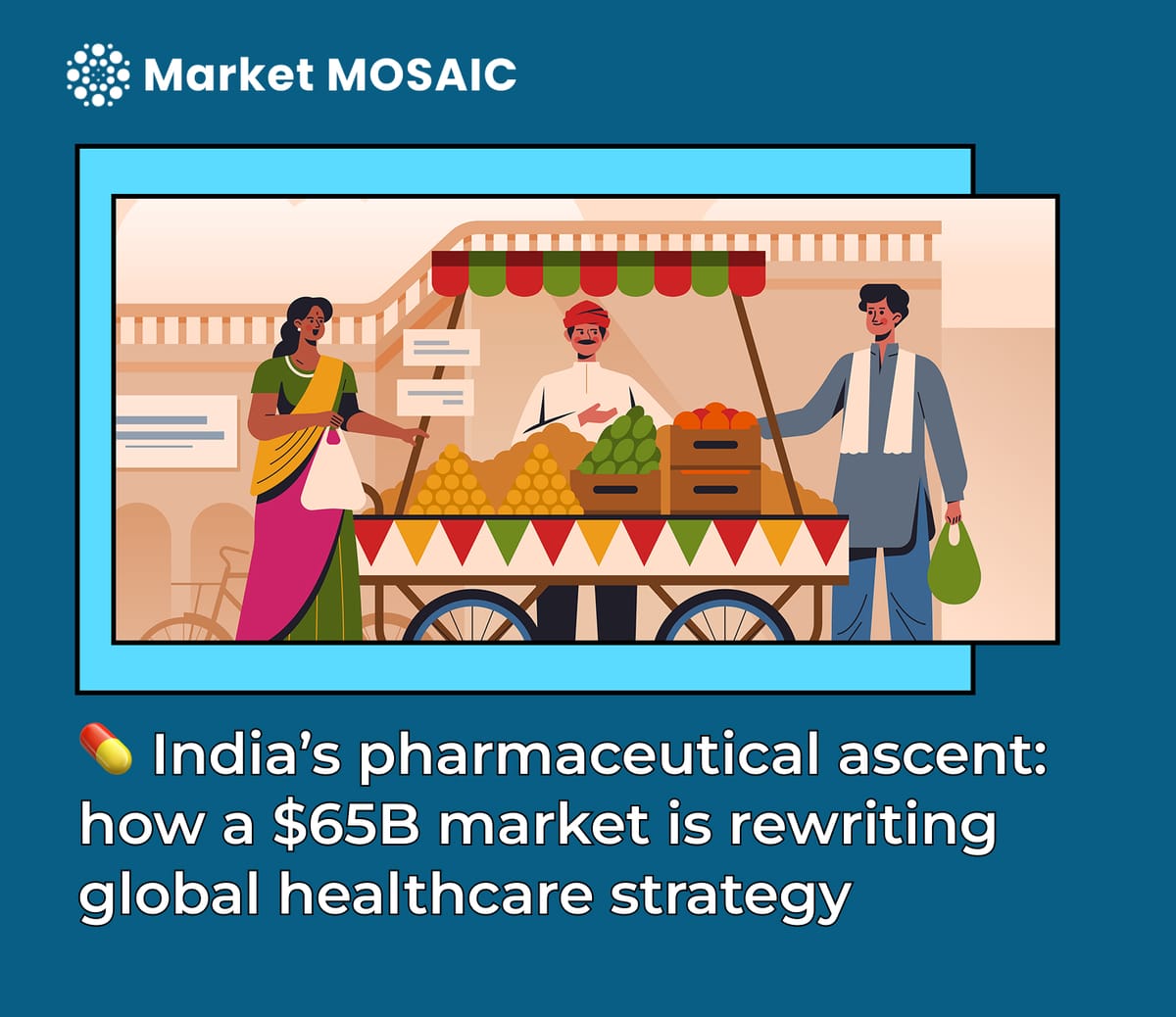💊 India’s pharmaceutical ascent: how a $65B market is rewriting global healthcare strategy

In the corridors of global pharma strategy meetings, one country’s name keeps surfacing: India. And with good reason. By the end of 2025, India’s pharmaceutical industry is expected to reach $65 billion, up from $32 billion just five years ago. This is not a routine growth trajectory. It is a sign of deep structural change in the global healthcare economy.
Behind this headline figure lies a story of strategy, resilience, and transformation.
For decades, India was known as the "pharmacy of the world," a title earned by its massive output of generic drugs shipped to every corner of the globe. But today’s India is charting a more complex course. Our data shows that 77 percent of the industry’s focus is now on formulations, ready-to-consume medicines that demand more sophisticated production methods and command higher margins. Bulk drugs, which once defined India’s pharmaceutical exports, now make up just 23 percent of the market.
This shift is more than technical. It reflects a country repositioning itself from being merely a low-cost supplier to becoming a strategic partner in global healthcare delivery. What makes this evolution even more significant is where these medicines are going. Over a third 34.4 percent of India’s pharmaceutical exports are destined for the United States, the world’s largest and most heavily regulated drug market. For a country often seen as a manufacturing hub for the developing world, this kind of presence in the U.S. healthcare system underscores both credibility and capacity.
In many ways, India’s moment has arrived because the world’s pharmaceutical system is searching for something new. It needs a diversified, reliable, and cost-effective supply chain that is not overly dependent on any single country. The pandemic exposed the fragility of global dependencies, particularly in active pharmaceutical ingredients, where China has long dominated. India now offers not just an alternative, but increasingly, an upgrade.
But the story does not stop at exports. Inside India, a quieter revolution is underway. Rising incomes, government investment in healthcare infrastructure, and a growing middle class have led to a surge in domestic demand for pharmaceuticals. For the first time, Indian pharmaceutical companies are seeing a viable path to scale not just as exporters, but as full-stack providers within their own borders.
This dual-track growth, both external and internal, presents a rare moment of opportunity.
For CEOs in biotech and healthcare startups, India offers more than a cost advantage. It is a potential collaborator in research, development, and market expansion. The regulatory environment is becoming more globally aligned. The talent pool is deep and experienced. And the domestic market is increasingly a testing ground for scalable innovation. Founders who have long focused on the West for strategic partnerships might now find their next breakthrough in the East. From co-developing novel formulations to accelerating time-to-market through Indian regulatory fast-tracks, the opportunity is not just to save, but to lead.
India’s pharmaceutical future is no longer hypothetical. It is here. The numbers support it. So does the strategy. A $65 billion market is not just a milestone. It is a map. And for those willing to look closely, it points to a healthcare future that is more global, more agile, and perhaps more human.





